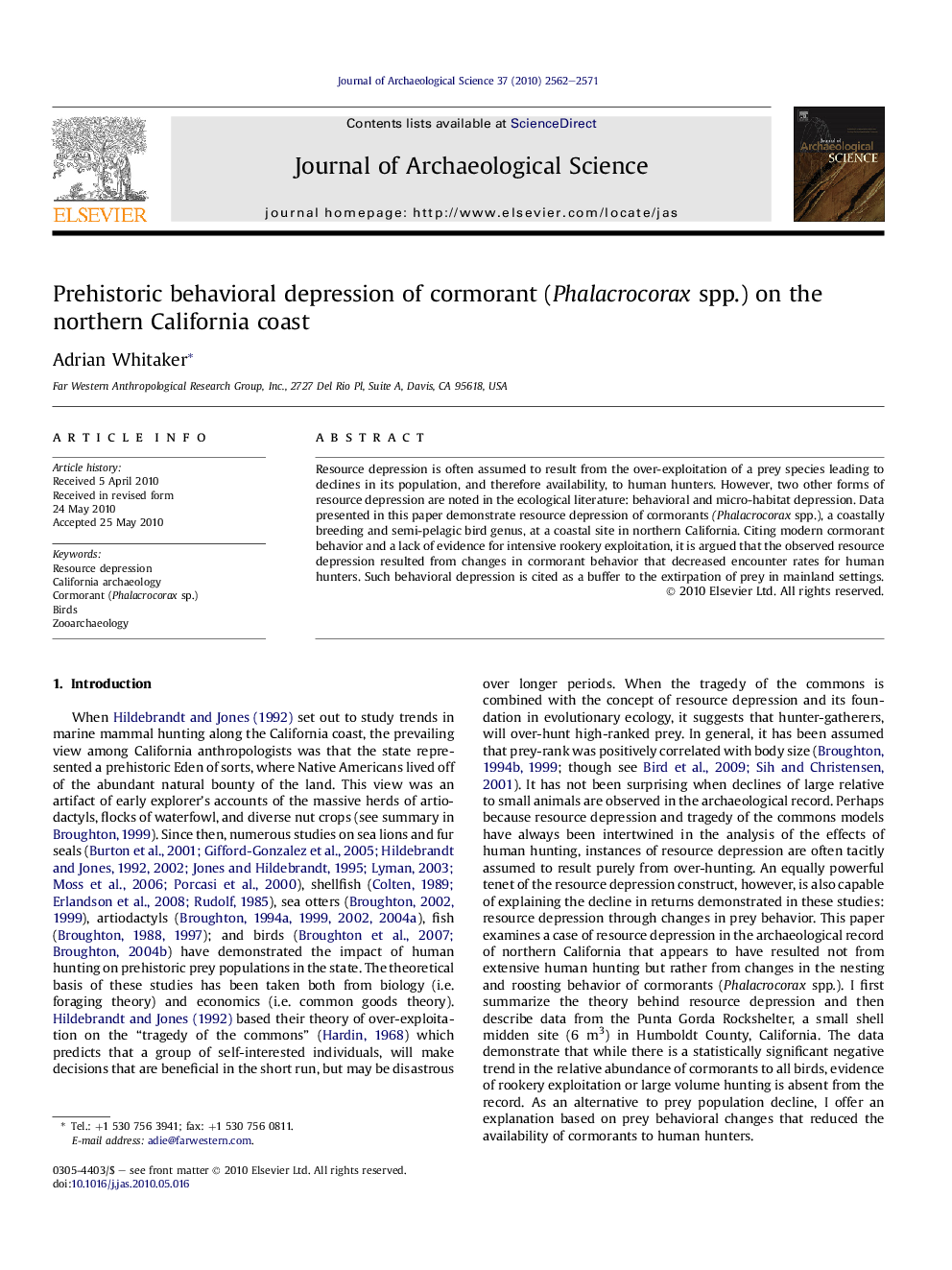| Article ID | Journal | Published Year | Pages | File Type |
|---|---|---|---|---|
| 1035957 | Journal of Archaeological Science | 2010 | 10 Pages |
Abstract
Resource depression is often assumed to result from the over-exploitation of a prey species leading to declines in its population, and therefore availability, to human hunters. However, two other forms of resource depression are noted in the ecological literature: behavioral and micro-habitat depression. Data presented in this paper demonstrate resource depression of cormorants (Phalacrocorax spp.), a coastally breeding and semi-pelagic bird genus, at a coastal site in northern California. Citing modern cormorant behavior and a lack of evidence for intensive rookery exploitation, it is argued that the observed resource depression resulted from changes in cormorant behavior that decreased encounter rates for human hunters. Such behavioral depression is cited as a buffer to the extirpation of prey in mainland settings.
Related Topics
Physical Sciences and Engineering
Materials Science
Materials Science (General)
Authors
Adrian Whitaker,
